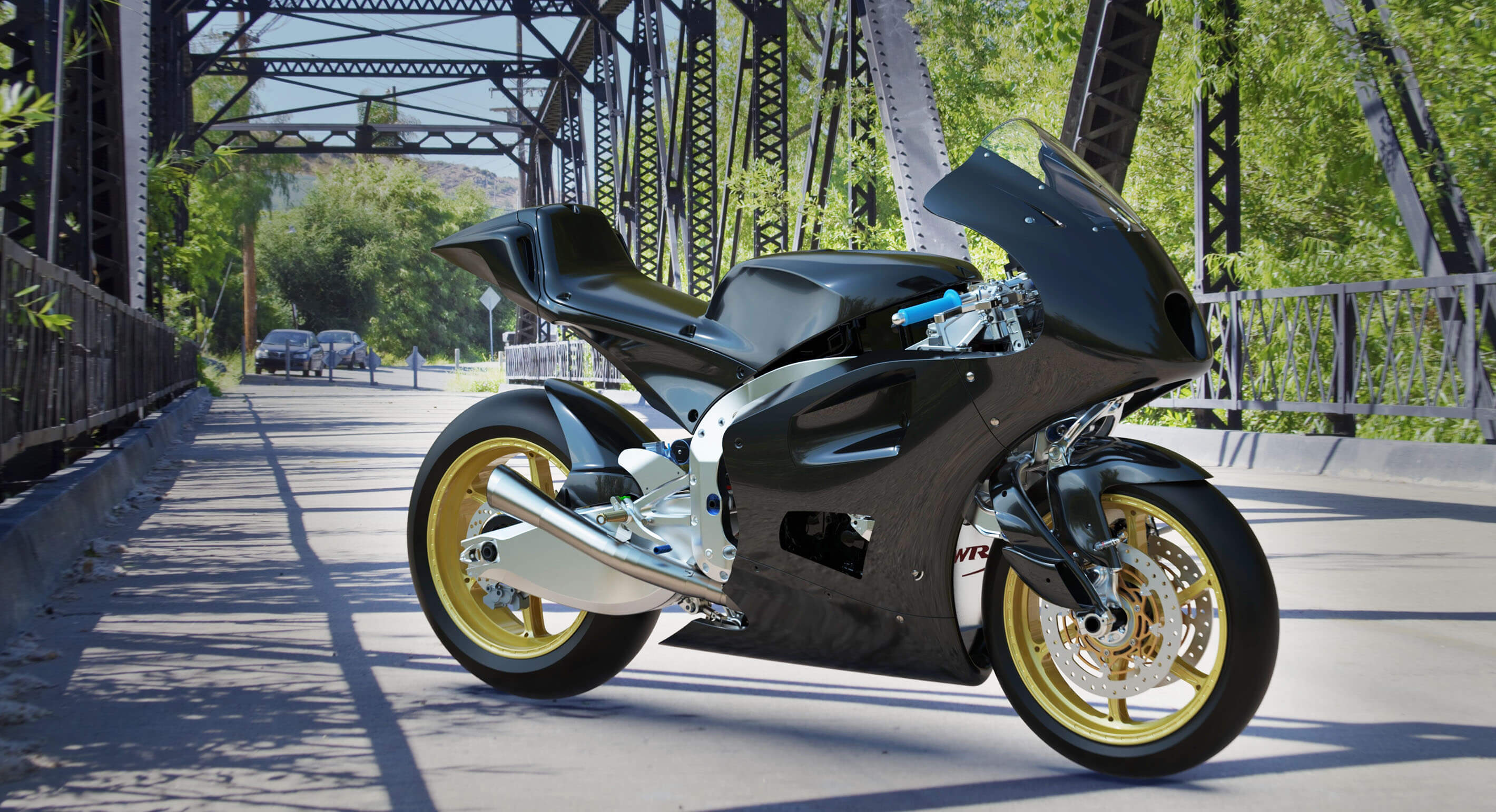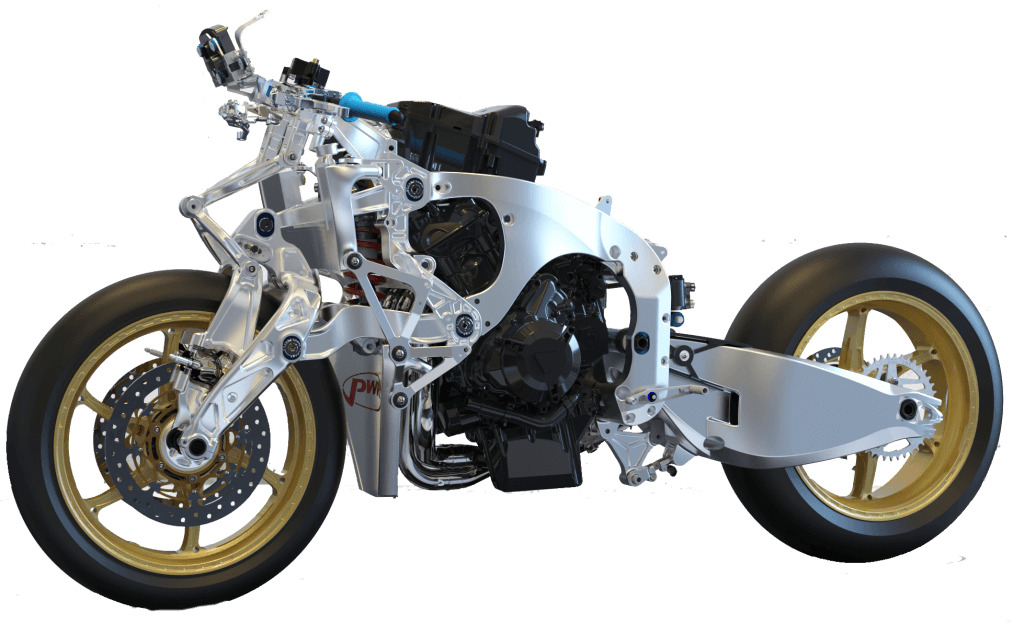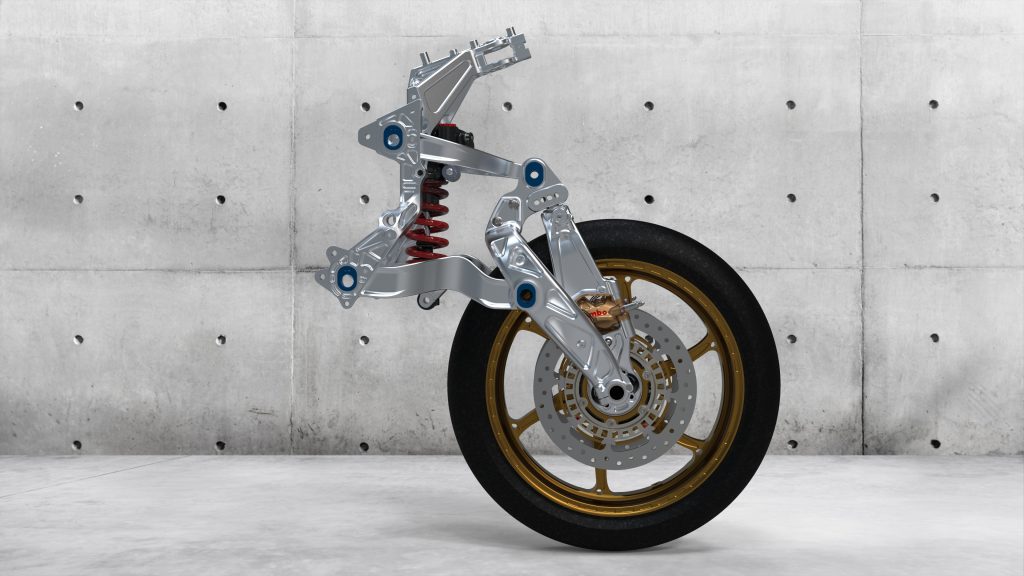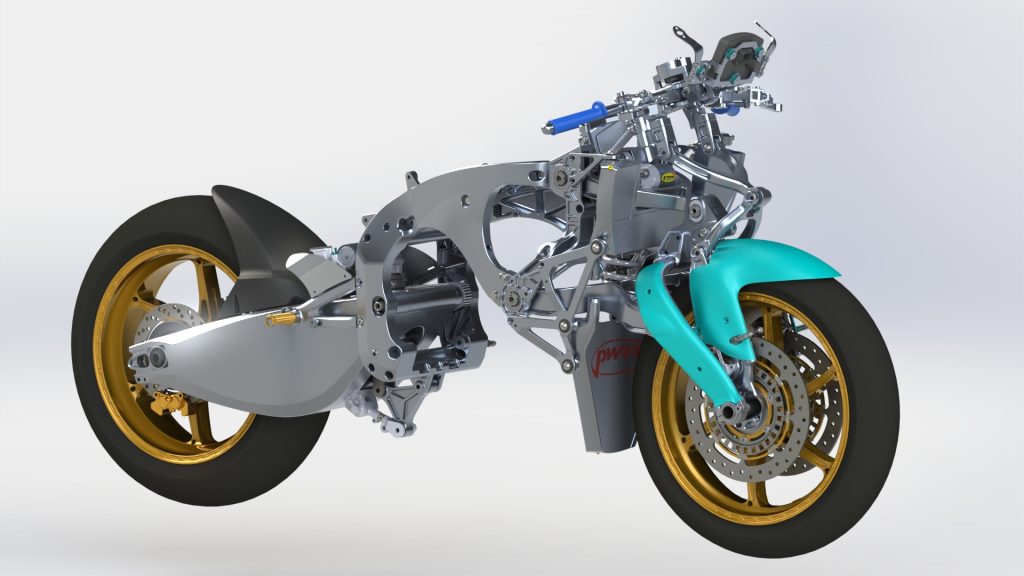
Let’s say we had the chance to invent the motorcycle for the very first time. Let’s also say we had the best current technology and forward thinking available at our disposal. The question would then be, how would we go about developing the best handling, most structurally stable, fully compliant and most dynamically safe motorcycle for the professional end user and day to day rider?
Logic suggests we would conceive it by using outside-the-box thinking. By including all past knowledge freely available and developed over the last hundred years from alternate and diverse technologies. Today it is possible to overcome the problems and limitations associated with current and known structures developed in the past.
With new and proven ideas and with today’s understanding of advanced materials and the known dynamics of steered suspension and all of its associated problems, any progressive engineer would not investigate or contemplate the development of telescopic or steered stanchion forks – or any form of steered suspension for that matter. Steered suspension systems are well known to be flawed – they consistently exhibit more negatives than positives.
Today’s steered suspension designs sit at a historical point in time – they can no longer evolve past our increased knowledge, understanding of motorcycle dynamics, our use of advanced materials and our ever increasing use of compensatory digital technology.
RAY VAN STEENWYK.
Steered suspension systems are basically at a dead end. No further evolution is possible with this antiquated form of technology. We cannot squeeze any more blood from this stone, not even with the continued development of tyre technology. We have definitively hit the brick wall of steered suspension development.
In this day and age, we have the ability to construct a system that is safer, stronger, more stable and more compliant than previously accepted mass produced systems in all respects. We have the capacity to build a system that is structurally superior in every way and far more flexible regarding geometry changes and real-world handling for the benefit of the motorcycle and rider. A system that separates steering and suspension from braking while creating a vastly stronger, more compliant, highly adjustable, infinitely tunable, completely stable and safer two-wheeled in-line front-end system.
Hub-Centre Steering (HCS) systems are definitively recognised to be a far superior base platform to the unbalanced telescopic and stanchion steered systems that are used on the majority (90%) of today’s motorcycles.
The negatives associated with unbalanced tubular compression or steered stanchion suspension are well known to compromise two-wheeled in-line stability, compliance, safety, and overall control. Experienced riders of a well developed HCS or alternate front-end system will most likely say they will never willingly go back to steered stanchion or telescopic systems – and for good reason – steered stanchion systems are intrinsically dangerous. They reduce the feel, compliance and stability of the front end of the motorcycle. Bizarrely, however, we are continually encouraged to ride around on these endemic flaws, because, it is said, there is no better system available. This, in fact, is not true.
A BRAVE NEW WORLD
Motor Cycle Innovation’s patent, addresses and removes all the known problems associated with steered stanchion front-end systems and past HCS systems while resolving the critical acceptance issue of appearance by creating a front-end style that closely resembles the lines of a telescopic forked motorcycle, in a more dynamic, highly flexible, tunable and acceptable way.



The Motoinno TS3 configuration, on looks alone, is distinctive, practical, highly functional and as we expect from a motorcycle in this day and age – it exudes an aggressive posture. A posture that the rider is in harmony with and also, in full and total control of.
As a factor of its design, Motor Cycle Innovation has been able to vastly reduce the motorcycle’s weight, while increasing structural integrity, compliance, geometric tuning capabilities and safety, far beyond that of normally accepted steered stanchion and alternate front end steering systems.
